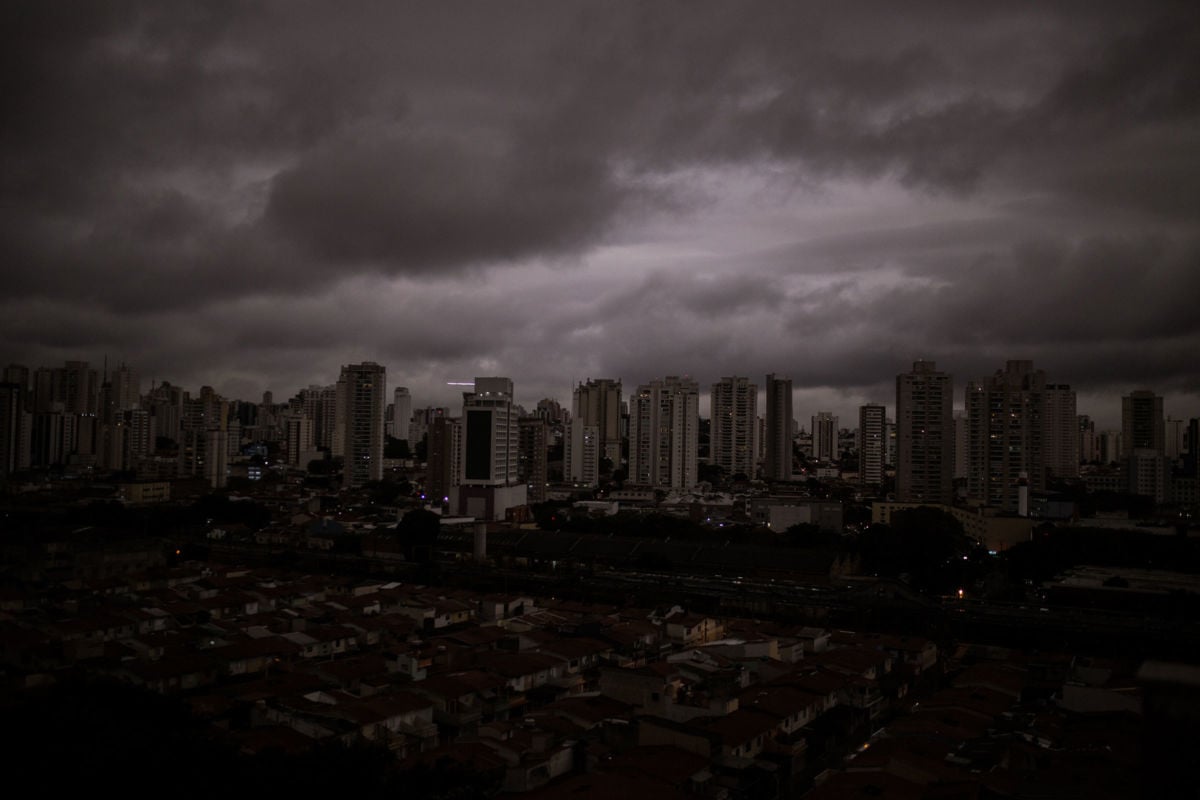This is why we need an Ecocide Law

The darkened sky in Sao Paulo, Brazil, is pictured on August 19, 2019. Residents reported black rain, while studies by two universities confirmed that the rainwater contains fire residue.ANDRE LUCAS / PICTURE ALLIANCE VIA GETTY IMAGES
The Amazon rainforest is the largest rainforest on planet Earth. Generating half its own rainfall and holding 20 percent of all the world’s rivers within its borders, it covers an area two-thirds the size of the contiguous 48 United States, and produces 20 percent of the oxygen in the world’s atmosphere.
There are more than 1,100 tributaries of the Amazon River alone, with seventeen of them longer than one thousand miles. The rainforest also creates “flying rivers,” — massive streams of airborne moisture that develop above the canopy and move with the clouds and rainfall patterns across the entire continent of South America.
Many scientists believe the Amazon is the most important source of biodiversity on the planet, and statistics back that up. It contains thousands of species of birds and trees, an estimated 2.5 million species of insects, and at least 3,000 species of fish in the Rio Negro alone, with new species being discovered all the time. A new species is discovered, on average, every other day.
And now, the Amazon is on fire. Wildfires are incinerating the rainforest at a record pace, according to Brazil’s National Institute for Space Research (INPE as it is commonly referenced). INPE recently stated that there has been an 80 percent increase in wildfires in the Amazon, compared to the same period from last year.
Smoke from the burning rainforest has blotted out the sky over Sao Paulo, a city more than 1,700 miles from the fires, while satellite imagery shows smoke from the fires having spread all the way to the Atlantic coast, covering half of Brazil, and even covering parts of Paraguay, Bolivia and Peru.
Crossing Thresholds
Thomas Lovejoy has worked in Brazil’s Amazon since 1965, but he is the first to say that “we’ve barely scratched the surface” in terms of our understanding of that rainforest, as he told Truthout during an interview in 2017. He was director of the World Wildlife Fund in the U.S. for 14 years, and has been given the nickname “the godfather of biodiversity,” having coined the term “biodiversity” himself. One of his reports, alone, led to more than half of the Amazon rainforest being put under protection.
During our interview, Lovejoy gave dire warnings of things to come, including the heartbreaking wildfires we are seeing now….
Bolsonaro: The Tropical Trump
According to INPE, deforestation across the Amazon had already accelerated by 60 percent in June, compared to the same time period last year, as radical right-wing President Jair Bolsonaro’s horrific environmental policies began to take effect.
Last month, Greenpeace labeled Bolsonaro and his right-wing government a “threat to climate equilibrium,” while the World Wildlife Fund, like many scientists, has warned that if the Amazon reaches a tipping point, it could become a dry savannah and will no longer be capable of supporting much of the wildlife that exists there today.
Instead of sequestering carbon and generating water and rainfall, the Amazon will instead become a net emitter of carbon, and the planet will lose most of its oxygen-producing function. Meanwhile, the loss of the Amazon’s biodiversity will be beyond devastating for the planet. MORE
RELATED:
